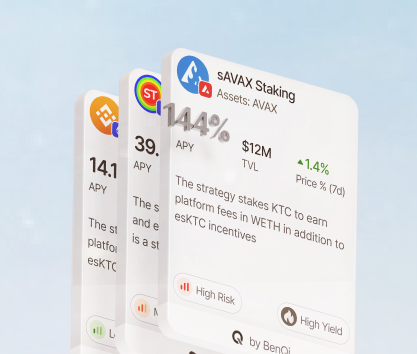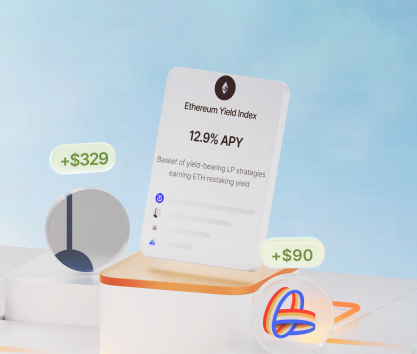Many crypto enthusiasts believe that there is nothing particularly difficult in calculating potential profits from investments in decentralized protocols. An overconfident investor often loses money in the most benign conditions just because they do not do their due diligence and learn more about interest rates in decentralized finance and how rewards are distributed among asset providers.
We want to talk about various ways to estimate ROI and make smarter investment decisions in the complicated world of DeFi protocols.
The overview of the ecosystem
The current landscape of the sector is comprised of over 11,000 tracked protocols operating across 96 chains. This number excludes a variety of Dapps that are not tracked or deployed on obscure blockchain networks. It also includes many “dead” projects that have zero user activity. The number of active wallets has risen by at least 280% in the first quarter of 2024. However, the true demography of the ecosystem is impossible to count.
One of the best metrics to track the growth and contraction of the sector is TVL or total value locked. It represents the value of assets (denominated in a reference currency, usually, USDT) locked in all pools within the ecosystem. The value has grown year-on-year by 163% and exceeds $94.7 billion as of November 2024. However, it is still 46% lower compared to the ATH achieved in 2022.
The total value of stablecoins locked in protocols is over $175 billion and daily volume is close to $12.5 billion indicating a high level of user participation and investor activity.
The biggest chain in town
Ethereum is the leading network with over $53 billion in TVL and close to $84 billion in stablecoin TVL. The vast majority of protocols are either directly deployed on the chain or support it among many others. The largest project here is Lido, a liquid staking protocol with over $26 billion in TVL.
Even direct staking on the mainnet yields 4% on average which is in line with US Treasury bonds (4.11% in October). A great advantage of using liquid staking protocols is that you can simply use STETH as collateral to take out a loan in USDC and stake it elsewhere for additional rewards. In such setups, calculating the profitability of stablecoin staking is incredibly important as interest rates must easily offset interest paid on borrowed assets.
Ethereum gas fees
You have to take them into consideration when investing in the mainnet. Moving assets from one wallet to another can be incredibly expensive. The overwhelming majority of crypto enthusiasts usually move their operations to layer 2 in an effort to save on fees. For instance, fees have skyrocketed to $21.8 when the congestion grew after the announcement of the results of the US presidential election.
Layer 2 solutions allow users to pay less than 0.01% on each transaction thanks to the technology of roll-ups packing multiple L2 transactions into a single transaction on the mainnet. Nevertheless, it is important to understand how fees work and when they become relevant for your investment strategy.
There are two ways to look at it:
- Storing ETH on the mainnet is safer as you don’t need to interact with smart contracts and can simply focus on staking. However, each time you need to transfer ETH assets, you will have to pay exorbitant fees.
- Using various L2 tokens for investment purposes saves on fees but can expose you to smart contract risks and other dangers.
In the vast majority of cases, you won’t have to think too much about gas as you will be moving assets across layer 2 more often than not. On the other hand, there may be a moment when you will need to move to the mainnet to liquidate some of your digital holdings. Waiting for a good moment to make a transaction is crucial to increase returns.
Estimating profits: APR
The annual percentage rate is the interest that you will be paid by the end of the investment period given you didn’t liquidate a position earlier. This is a flat rate that can be paid out daily, weekly, monthly, or annually. If you see this number, it means that your returns are “flat” as you cannot compound gains and increase potential profits.
Here’s an example: if you invest $10,000 at 5% APR, you will collect $10,500 by the end of the year and $15,000 by the end of a decade.
What is APY?
Annualized percentage yield is the metric used more commonly in decentralized finance. It represents interest with compounding already incorporated in the calculation allowing investors to see the potential outcome of their investment activities. With daily compounding, the number quickly grows.
Let’s use the same APR of 5% on a $10,000 investment but with daily compounding: at the end of the first year, you will earn $512.67, a return of roughly 5.13%. However, by the end of a decade, the return will be $6,486 which is 64.87% instead of 50%.
How to make a good calculation?
Be careful when looking at interest rates offered by pools. Some of them use APR while others will use APY. Depending on compounding periodicity, the outcome can be very different from an estimate if you don’t take it into consideration. APY is applied to the investment as a flat rate.
You may also see very specific abbreviations that are used only in niche cases. For instance, the CRP is 4.95%. It may seem like a very good return. However, the abbreviation does not mean APR or APY. Instead, it refers to the current reward percentage indicating the share of POL (MATIC) dedicated to paying out rewards.
The real rate will be lower. For example, investing $10,000 at a 10% validator commission yields 3.85% APR given you have been staking for at least 365 days. This rate is slightly below US treasury bonds and high-yield bank accounts (roughly, 5%). The difference must be compensated by MATIC price appreciation for the investment to make sense.
Evaluating liquidity mining opportunities
All decentralized protocols are fighting for liquidity and must acquire it from capital holders. The main incentive for these investors to put assets into pools is high ROI. Since DEXes cannot produce money out of thin air, they are instead offering native, governance, or layer 2 tokens as rewards. Depending on market circumstances, these tokens can appreciate in value or lose it due to inflation and low user activity.
Again, understanding how interest rates work and whether you will receive a good payout can be difficult. Let’s talk about two examples:
- Aerodrome on Base was criticized by many enthusiasts for its generous rewards that many deemed unsustainable even in the short term. Some thought that the issuance of AERO tokens at a high pace would tank the price instantly. However, 9 months after launch, the AERO token is 15 times more expensive, has a $912 million market cap, and investors can gain up to 817% in AERO rewards by investing in various pools offered by the exchange.
- Flamingo Finance has a different story. The protocol is offering huge rewards in FLM tokens that were also criticized for the same potential drawbacks as Aerodrome. The follow-up was dramatically different. The token barely held to a 14% appreciation in just 7 months. While it recovered slightly during the next 6 months, the price tanked dramatically in June 2022 dipping to $0.09 which is 68% lower compared to the launch.
While these are two different stories, investors with great timing managed to make money in both cases. It is hugely important to track prices carefully and find the right moment to liquidate a position whenever a good opportunity presents itself.
Cross-chain yield farming
One of the best approaches to investing in the world of decentralized finance is by targeting as many high-yield pools as possible regardless of where they are deployed. Since you can invest in thousands of different pools, tracking the best combination of positions is close to impossible. The sheer number of available options will make any manual analytical process futile. You can work with providers of reliable strategies like Rivo.xyz to achieve consistent returns. On the other hand, there are other interesting solutions in the ecosystem.
Yield aggregators offer excellent returns on investments for crypto enthusiasts interested in building balanced portfolios. These protocols often offer investment opportunities across multiple networks providing additional flexibility to proactive capital holders. Below are some examples of such projects:
- Beefy Finance is the most popular aggregator. The protocol works across 8 different chains including Ethereum, Base, Polygon, and Avalanche. Beefy has a $270 million TVL, tracks 790 pools with an average APY of 835%, and has one of the deepest catalogs out there. While you cannot earn rewards in BIFI by simply putting assets into pools, there are special programs allowing users to acquire tokens.
- Ether.fi Liquid is the biggest yield aggregator that works with Ethereum-based protocols and offers a wide range of unique investment opportunities to its users. The total value locked across all available pools is $444 million. You can earn various rewards as the protocol allows users to invest in pools offered by Uniswap, Curve, Karak, Camelot, and others.
- Yearn Finance is another popular destination for crypto enthusiasts. It has a massive $210 million TVL. The protocol offers 148 pools across 6 chains including Ethereum, Polygon, and Optimism among many others. The average APY is 387%. One of the best pools for rewards here is DAI. It is a relatively low-risk endeavor with a 3.6% base APY and 19.4% in rewards.
How to mitigate risks
You can reduce the danger to your portfolio by avoiding memecoins, questionable protocols, and limiting investment activities to time-tested projects that provide good returns. However, due to the nature of the DeFi ecosystem, even these measures may be insufficient. You can do something about it. Below are some tips for risk reduction:
- Calculate impermanent loss which occurs when the price of a staked asset drops below the entry value. In many cases, investors can hold on to their positions and wait until the price recovers. When this method is unavailable, you have to be prepared for realized losses. Estimating them preemtively with calculators and technical analysis can be a good way to avoid risky positions.
- It is also important to use insurance in DeFi as many protocols use smart contracts that may have vulnerabilities. Insurers can protect your capital from a variety of risks including sudden price fluctuations, protocol failures, and smart contract exploits. You are purchsing insurance from other capital holders so premiums are usually lower compared to what you can expect from tradfi instruments.
The main takeaway
Calculating potential ROIs from DeFi investments is quite difficult due to the complexity of the ecosystem and diversity of available instruments. However, using some of the tips explained above is a good way to make better investment decisions.









